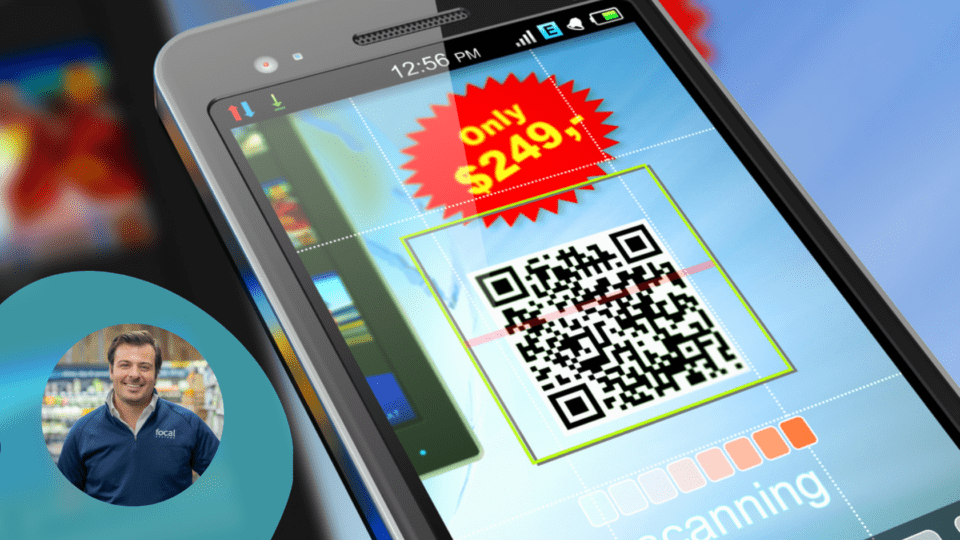In the late 1970s, moviegoers were entranced by the futuristic sights on their screens, like otherworldly lasers in Star Wars lighting up theaters across the country. Soon after, politicians and scientists theorized about the possibility of using lasers to protect the U.S. from nuclear missiles. Lasers were something out of science fiction or at least reserved for the upper reaches of military strategy.
But lasers were already commonplace in our lives by the late 1970s: as barcode scanners in grocery and retail stores.
Barcode scanners revolutionized retail, giving companies the ability to easily measure and track sales, margins, inventory counts and more. Today, lasers are used across nearly every industry you can think of, from precise cutting and welding in manufacturing to surgery use in healthcare.
It’s not uncommon for technologies to see their first practical applications in a retail setting before finding widespread adoption. Retailers are often the “first to try” exciting new technologies and see how they can improve the shopping experience for customers or make the lives of store workers and managers easier.
Advertisement
Most recently, we’ve found ourselves in the midst of a sea change in the way we utilize artificial intelligence (AI), and although the average consumer might not be aware, a lot of AI and computer vision technology has cut its teeth in retail, in the big box stores and grocers of the world.
AI in Retail Today
By utilizing AI and computer vision technologies, retailers can gather in-depth, real-time inventory data to automate and optimize their stores.
Inventory management systems that have been equipped with AI functionality can automate order-writing functions, reducing the windows when a product is unavailable for purchase due to manual ordering not being timely enough. Many retailers have utilized small, shelf-facing cameras that, due to integration with AI, can monitor if a product needs to be restocked (or ordered if there’s little remaining out back). Intelligent systems can also flag items that are consistently selling faster than expected, suggesting that more shelf space should be allocated to that product and, if necessary, orders increased.
While the use cases for AI will be vastly different across industries, the core benefit of anticipating what will be needed before that need arises has had a transformative effect on retailers and grocers that have adopted AI. This often requires minimal setup cost as many computer vision and AI processes integrate with already existing inventory management and ordering tools.
Why Retail First?
So why do we often see these technologies first take root in our everyday lives through retail? Something can certainly be said for the willingness of those in charge of major retail chains to try out the latest nascent technologies, but most importantly it comes down to the retail industry’s sensitivity to consumer demands.
Consumer tastes and expectations change rapidly, so retailers need to stay at the forefront of trends. Being able to adapt quickly and anticipate needs (which, of course, is what AI is used for!) is necessary — otherwise, customers will easily jump ship to a competitor.
With customer experience so paramount in retail, new technologies that engage customers or make their experience better (everything from keeping products they’re looking for on the shelf to speeding up checkout with the use of lasers and barcodes) will have an immediate and significant impact on customer satisfaction.
For example, chances are some of the first places you were able to use your security chip-enabled credit cards were retail settings, well before you could at gas stations, hotels and other points of sale. The desire for better card security had grown to be something that was expected in the near future, so retailers were quick to install chip readers.
What’s Next?
Reports of brick-and-mortar retail’s death have been greatly exaggerated. Many predicted online shopping would take down physical retail stores entirely. Clearly, that hasn’t happened.
What’s next is a combined focus on physical stores and ecommerce. Sure, we’ll see a doubling down on online ordering and pickup, and the problem of substitutions for those orders is something that AI is already starting to be leveraged to solve. Amazon is still an incredible force that can’t be ignored in the retail space, after all.
But we’ll also see further use of automation and intelligent technologies in physical stores to help improve the experience of visiting that store. It’s very possible that some stores will largely run themselves in many aspects, allowing most or all of the employees on-site to focus on customer satisfaction for visitors in the store.
Technology is by design meant to make our lives easier, so look for technologies and unique use cases that will reduce in-person pain points and help create experiences that bring customers back into retail locations again and again, with AI leading the way.
Francois Chaubard is the CEO of Focal Systems, a deep-learning computer vision company focused on automating brick-and-mortar retail. Prior to founding Focal Systems, Chaubard worked at Apple as a deep learning researcher on secret projects. Before that, he attended Stanford University as a dual masters in CS and EE where he researched deep learning and computer vision under Fei Fei Li, the Director of the Stanford Artificial Intelligence Lab (SAIL) at Stanford University. There he created and taught two courses and was the TA for Stanford’s famous Machine Learning course. Before that, he was a missile guidance algorithm researcher at Lockheed Martin building the next generation of the U.S. AEGIS Ballistic Missile Defense System.




